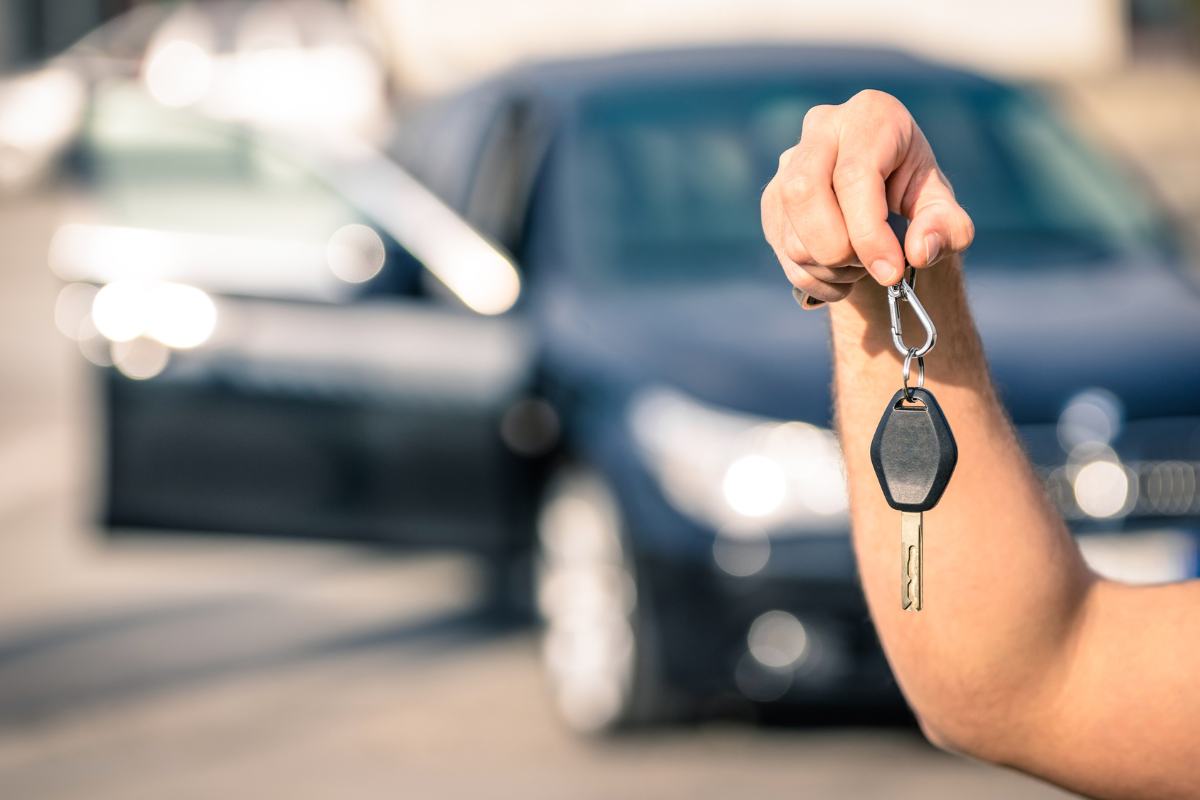Buying a car in Singapore is more than just picking a model and driving off—it’s a big financial commitment shaped by strict rules and high costs. With limited road space and a quota-based vehicle system, owning a car here involves navigating complex processes like bidding for a Certificate of Entitlement (COE), understanding additional taxes, and planning your budget carefully.
If you’re a first-time buyer, an expat considering your options, or just curious about how car ownership works in Singapore, it’s essential to be informed before taking the plunge. This guide breaks down everything you need to know—from how the COE system works to what kind of loans are available, the real costs of owning a car, and tips for making a smart purchase. Whether you’re buying brand new or considering a used vehicle, understanding the local landscape will help you avoid costly surprises and make the most of your investment.
Ready to take the wheel? Let’s explore what it really takes to own a car in Singapore.
Understanding the Unique Singapore Car Landscape
The Sticker Shock: Why Cars Are So Expensive in Singapore
Singapore is one of the most expensive places in the world to own a car. Several layers of taxes and regulatory fees drive up the total cost:
- Open Market Value (OMV): This is the base cost of the car as assessed by Singapore Customs, based on its original purchase price, shipping, insurance, and related charges.
- Additional Registration Fee (ARF): A tiered tax calculated based on the OMV:
- First $20,000 – 100%
- Next $30,000 – 140%
- Above $50,000 – 180%
- Excise Duty & GST: 20% Excise Duty on OMV, followed by 9% GST on the total (as of 2024).
- Dealer’s Margin: This can vary depending on dealer and brand, typically ranging between 10%–30% of OMV.
- Certificate of Entitlement (COE): This is perhaps the most significant cost component — sometimes exceeding the price of the car itself.
Together, these costs mean that even a modest sedan may cost upwards of S$100,000.
Certificate of Entitlement (COE): The Heart of Car Ownership
COE is a government-issued permit that allows you to own and use a car in Singapore for 10 years. The quota is controlled under the Vehicle Quota System (VQS) to manage road congestion and environmental impact.
COE Bidding Basics:
- Bidding happens twice a month via an open auction system.
- Categories include:
- Cat A: Cars ≤1600cc & ≤130bhp (mainstream sedans).
- Cat B: Cars >1600cc or >130bhp (luxury/performance cars).
- Cat C: Goods vehicles & buses.
- Cat D: Motorcycles.
- Cat E: Open category (can be used for any vehicle type).
- Winning bids determine COE prices, which fluctuate based on demand and quota.
- At the end of 10 years, you may choose to deregister the car or renew COE (5 or 10 years) via Prevailing Quota Premium (PQP).
Latest COE prices and quotas can be tracked via OneMotoring.
Before You Even Look at Cars: Setting Your Budget and Needs
Calculating the True Cost of Ownership
Don’t focus solely on the purchase price. Here’s a breakdown of what to budget for:
Initial Costs:
- Down payment (usually 30–40% of car price).
- COE bid or top-up.
- ARF, GST, Excise Duty.
- Registration & admin fees.
Ongoing Costs:
- Car Loan Repayments: Capped at 70% loan-to-value with a 7-year tenure.
- Road Tax: Depends on engine capacity or power output.
- Insurance Premiums: Affected by driver’s age, experience, claims history, and car model.
- Fuel or EV charging.
- Parking & ERP Charges.
- Servicing & Repairs: Regular oil changes, tyre replacements, and occasional major repairs.
- Depreciation: Cars in Singapore depreciate faster due to the 10-year COE lifespan.
Tip: Multiply your annual ownership cost by 10 to estimate your total car cost. Use car calculators on Sgcarmart to simulate costs.
Assessing Your Needs
Ask yourself:
- Do you need a compact sedan or a family MPV?
- Is fuel economy or boot space more important?
- How often will you drive?
- Do you want a petrol, hybrid, or electric vehicle (EV)?
- Are you tech- or safety-feature inclined?
New vs. Used Car: A Singaporean Dilemma
Buying New: Pros & Cons
Pros:
- Latest models and safety tech.
- Full warranty coverage.
- Full 10-year COE.
- Lower maintenance in initial years.
Cons:
- Higher cost.
- Greater depreciation in first 3–5 years.
- Waiting period for delivery.
Buying Used: Pros & Cons
Pros:
- Lower upfront cost.
- Slower depreciation.
- Shorter delivery time.
Cons:
- Remaining COE might be short.
- More wear and tear.
- Risk of hidden defects.
- No warranty unless certified pre-owned.
Tips:
- Always check the remaining COE and PARF rebate.
- Get a professional inspection (VICOM or STA).
- Consider cars under the Certified Pre-Owned programme for peace of mind.
The Car Buying Process: Step-by-Step
1. Researching & Shortlisting
- Explore platforms like Sgcarmart, Carsome, or Carro.
- Visit showrooms (authorised dealers vs. parallel importers).
- Compare specs, test drive options, and prices.
2. Financing Your Car
- Choose between bank loans or dealer financing.
- Compare Effective Interest Rate (EIR), not just flat rate.
- Prepare documents: NRIC/FIN, income slips, IRAS notice, EP/work pass for foreigners.
3. COE Bidding (If applicable)
- You can bid yourself via OneMotoring, or let the dealer handle it.
- Set a realistic reserve price.
- Dealers may offer guaranteed COE packages — but at a premium.
4. Test Driving & Inspection
- Try various road types.
- Check acceleration, braking, visibility, and infotainment.
- For used cars, get a pre-purchase inspection.
5. Negotiation & Paperwork
- Negotiate for discounts, accessories (e.g., solar film), or servicing packages.
- Confirm terms in the sales agreement.
- Pay booking fee (~S$500–S$1,000).
6. Car Insurance
- Mandatory before registration.
- Choose from:
- TPO: Cheapest, minimal coverage.
- TPFT: Fire & theft protection.
- Comprehensive: Recommended.
- Get quotes from multiple providers and factor in No-Claim Discount (NCD).
7. Registration & Number Plate
- Your dealer will handle most documents:
- Temporary COE (TCOE).
- Insurance confirmation.
- Registration fees (~S$220).
- Optionally bid for a preferred car plate number (additional cost).
Post-Purchase: What Comes Next?
- Road Tax: Renewed every 6 months.
- Servicing Schedule: Follow manufacturer-recommended intervals.
- Vehicle Inspection: Mandatory after 3 years, then annually (for cars >10 years, every 6 months).
- ERP & Parking: Consider season parking for convenience.
- Deregistration: At the end of COE, claim PARF/COE rebates or export car.
Tips for Smart Car Buying in Singapore
- Set a firm budget based on total cost, not just monthly payments.
- Use comparison tools online.
- Always check COE trends and bidding history.
- Never rush; sleep on your decision.
- Inspect used cars thoroughly — don’t rely solely on photos.
- Understand the implications of COE expiry and renewal.
- Negotiate everything — especially when COE prices drop.
- Keep your documents ready for smoother financing.
Final Thoughts

Owning a car in Singapore is undeniably expensive, but for many, the comfort, flexibility, and independence it offers can make it a worthwhile investment. With a limited number of vehicles allowed on the road, strict regulations and high upfront costs—such as the Certificate of Entitlement (COE), Additional Registration Fee (ARF), and road taxes—make car ownership a serious financial decision.
That said, being well-informed can make a big difference. Start by understanding the full cost of ownership—not just the purchase price, but also insurance, maintenance, petrol, parking, and ERP charges. Deciding between a new or used vehicle is also key. New cars come with warranties and fewer repair concerns, while used cars may be more affordable but require more thorough checks.
Preparation is your best asset. Research COE trends, set a realistic budget, explore financing options, and don’t rush into a purchase. Consider factors like your daily commute, family needs, and lifestyle before choosing a car.
Whether you’re chasing the dream of owning your first car or simply trying to make sense of Singapore’s complex vehicle policies, a clear plan and good research will go a long way in helping you drive away confidently and cost-effectively.




